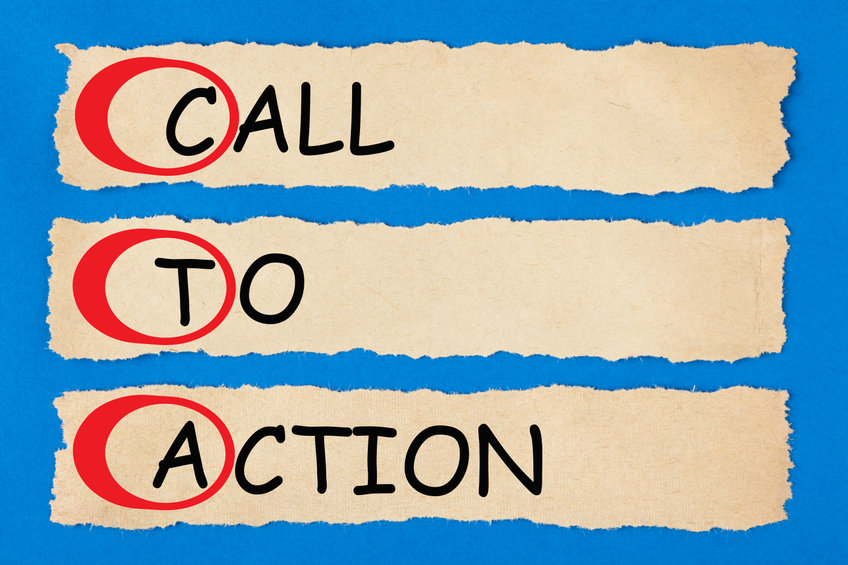
In marketing, a “call to action,” or “CTA,” is a small but mighty element of every marketing initiative. It answers the question “what now?” after a prospect consumes a blog, article, video, advertisement, email or other types of content. The call to action, whether digital or print, encourages prospects to take immediate action. Whether you urge a prospect to buy now, subscribe to a newsletter, schedule an appointment, download a white paper or connect with a customer service rep, effective CTAs keep potential customers engaged and guide them through the buying journey. How can marketers maximize these small but powerful tools in a strategic way?
5 Ways to Create Clickable CTAs

In most cases, CTAs appear as graphic banners, buttons or links that direct a user to the next piece of information they need to make a purchase decision. Without a CTA, even the best marketing initiatives can become a dead end for otherwise qualified leads. To ensure your CTAs are delivering results, keep these best practices in mind:
- Put yourself in the prospect’s shoes. CTAs are intrinsic parts of the user experience. They move prospects from one place to the next, with the goal of providing relevant information while guiding them through the sales funnel. To make the most out of CTAs, it’s essential to understand the user experience from the prospect’s point of view. When creating marketing content, ask yourself:
- What is the purpose of this content?
- Who is its ideal reader?
- What do I want them to do next?
- What value are we providing?
- Make CTAs eye-catching. Design is an important part of getting your CTA right. It should stand out without being overwhelming. It should also contrast with the colors on the page while still aligning with your brand’s palette. When designing your CTA, consider placement, color scheme, font, size, shape and images. Even small visual elements can make a big difference. Consider these examples:
- Helzberg Diamonds saw a 26 percent increase in clicks by simply adding an arrow icon to their CTA buttons.
- SAP found that orange CTAs boosted their conversion rate by more than 32.5 percent.
- Reducing clutter around their CTA increased Open Mile’s conversion rate by 232 percent.
- Keep it short and to the point. At its core, a CTA aims to persuade. When asking someone to do something, the clearer, the better. Keep the wording concise and straightforward to increase the clarity and visibility of its request. Use strong verbs that convey a clear action. Examples include “subscribe,” “download” or “click.” Phrasing that creates excitement or urgency can compel users to take immediate action. “Limited time offer,” “buy now” and “don’t miss out” are some examples. Provide value and benefits within or surrounding the CTA to generate trust. Examples of this include “learn more” or “try us for free.”
- Focus on making a connection. While the actions will be different, the overall goal of each CTA boils down to the same thing: to convert prospects into customers. As with any customer-centric marketing endeavor, aim to provide solutions and foster a connection. Avenues to connect can be as simple as engaging with more content, scheduling a call or sending a message. Above all, make it easy for your audiences to connect with you. Marketing expert Vickie Sullivan recommends, “Put your ‘contact us’ button on every page. It sounds simple, but you’d be surprised how many times I’ve had to hunt for an email to ask a question before placing my order. Buyers not only need clarity on what to do next but also easy access to information.”
- Test, review, and revise regularly. Your brand, subject material and target audiences all influence what CTAs will work for you and your prospects. It can be challenging to know what will succeed until you start testing. Seek feedback, consider the best practices of experts and competitors, and collect and review data. Continually review and adjust the design and wording of your CTAs. Pay attention to the details and refine regularly to maximize results.
Small but Mighty

Of all the many marketing messages you create, your CTA will likely be the most important words you write. Calls to action are most successful when they are short and sweet. Although they are small, they are powerful parts of your marketing strategy that can deliver big results. CTAs serve as essential building blocks to your ideal buyer’s journey. Without those blocks in the right place, the entire structure can tumble. Focus on creating compelling CTAs that communicate your value proposition, provide clear direction, increase urgency and create a connection with your prospects. When you do, you’ll transform interest into real purchasing intent.
